
National Geographic Society Katmai expeditions photographs, Archives and Special Collections, Consortium Library, University of Alaska Anchorage.
On June 6, 1912, a new volcano emerged on the Katmai landscape and forever altered this region. For 60 hours, a volcano later named Novarupta sent ash into the sky as high as 20 miles (30 km). Ash and pumice from the eruption also rushed down the Ukak River valley as pyroclastic flows and surges moving at more than 100 miles per hour (160 kilometers per hour). The Ukak River valley was transformed into 40 square miles (64 square kilometers) of barren ash. Heat trapped in the ash took decades to cool. Any water buried by the ash or that percolated into it flashed into steam. The vents where the superheated steam emerged became the fumaroles that inspired the name Valley of Ten Thousand Smokes. Today the Valley of Ten Thousand Smokes (i.e. the Valley) offers a chance to explore a landscape created by the largest volcanic eruption of the 20th century. The beauty, scale, wildness, and mystery of the Valley make it one of the best places in the world to study the violence of volcanic eruptions and experience the raw power of nature. Destinations in the Valley of Ten Thousand Smokes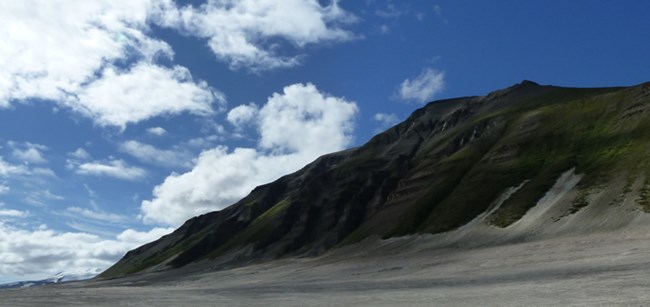
NPS/M. Fitz The western side of the Valley is bordered by this ridge. Along the Buttress Range, several small, inset alcoves provide water and inviting places to camp. Wildlife such as bears, ground squirrels, ptarmigan, and even caribou can be seen in this area. The crest of the Buttress Range is easily traversed along its length. 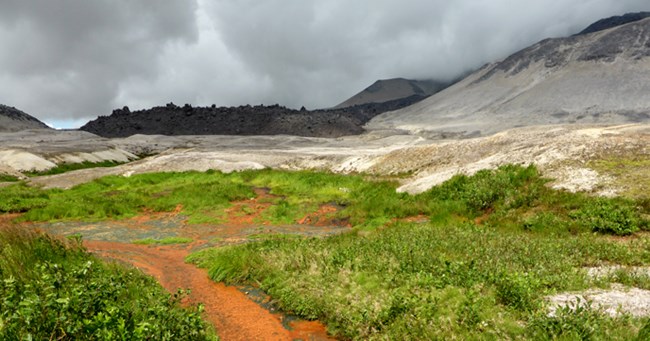
NPS/M. Fitz Katmai Pass is one of the lowest points in the crest of the Aleutian Range in Katmai. It offers a relatively easy route between the Pacific Ocean and Bristol Bay watersheds. Until the 1912 eruption, a trail through Katmai Pass was frequently used by Alaska Natives as a trade route. While the historic trail through the pass was buried by ash and pumice, the area still provides many places to explore. Hikers moving south through the pass can explore the lava flows from southwest Trident and the warm springs that seep from underneath them. Hikers moving north through the pass can imagine what Robert Griggs saw in 1916 when he first gazed upon the steaming valley. The summit of Observation Mountain, several miles south of the pass, offers amazing views of the Katmai River gorge and valley. Email us (the park's wilderness office) for information about the route from Katmai Bay to Katmai Pass. 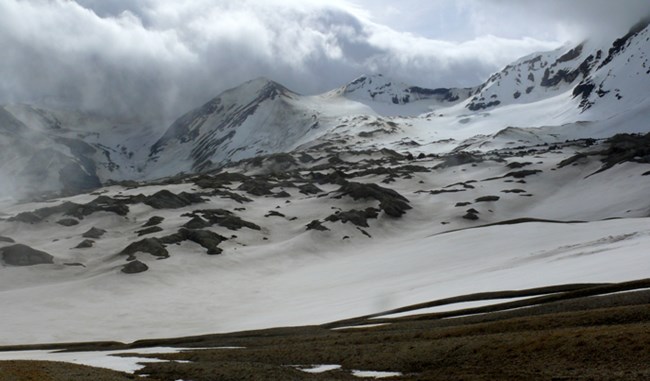
NPS/M. Fitz The lower slopes of the Knife Creek Glaciers are covered with as much as 6 feet (2 meters) of ash and pumice. Hikers can walk right up to the foot of and even on the glaciers, with caution. Three thousand feet above the glaciers lays the caldera of Mount Katmai. The summit of Mount Katmai collapsed during the 1912 Novarupta eruption leaving a caldera more than 2000 feet (600 m) deep. All routes to the caldera require crossing glaciers with crevasses. 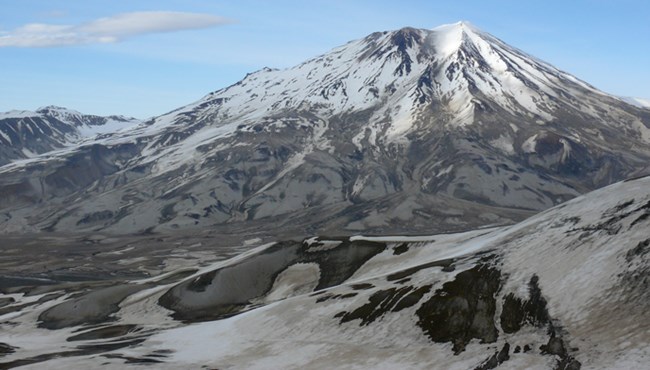
NPS/M. Fitz This is the tallest mountain bordering the Valley of Ten Thousand Smokes. Ascents of Mount Griggs can be made from its relatively gentle western slopes. The final approach to the summit requires a tricky traverse of glaciers and a snow and ice covered knife-edged ridge. In late summer, water can be difficult to find near the base of Mount Griggs. 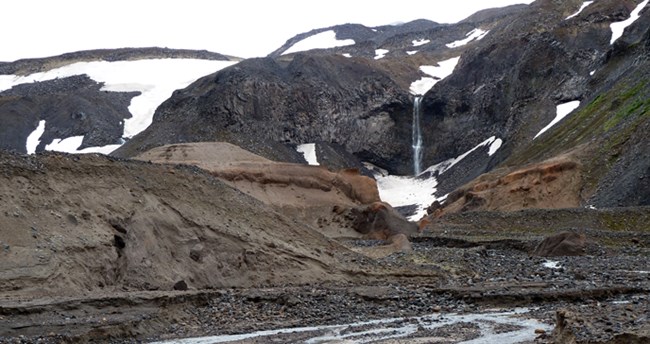
NPS/M. Fitz When explorers first entered the Valley, they found the toe of two glaciers occupying the basin where two beautiful, but distinct lakes sit today. Surrounded by cascading waterfalls, a muddy, silt-laden lake can be found where the Buttress Range meets the slopes of Mount Mageik and Mount Martin. Closer to Katmai Pass, a turquoise colored lake can be found.
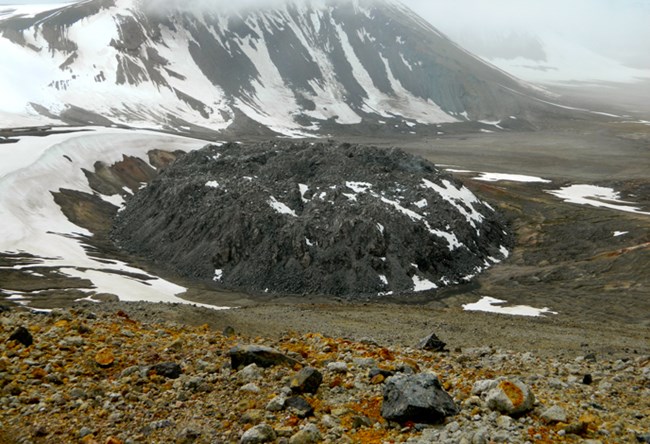
NPS It is a mere bump on the Valley’s floor and rises only 200 feet (65 meters) above its surface, but despite its small size this volcanic dome marks the vent of the largest volcanic eruption of the 20th century. When explorers first entered the Valley, this was one of the hottest areas and the dome still wafts warm steam. Superheated jets of steam from nearby fumaroles cooked the surrounding ash and pumice and deposited kaleidoscopes of minerals. The area near Novarupta is the most colorful in the Valley. Novarupta is located approximately 14 miles from the Windy Creek trailhead on the Valley Road. Water draining from perennial snowfields is typically available near Novarupta, even in late summer.River Crossings in the Valley of Ten Thousand Smokes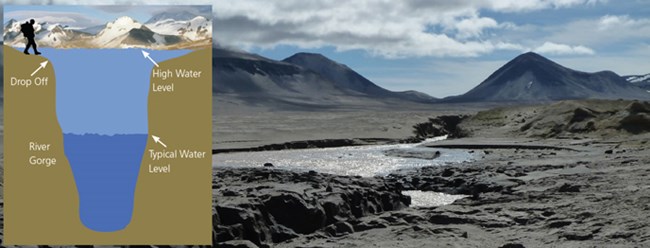
NPS If you cannot find a safe crossing, then you should not attempt to cross. You may also need to wait a day or longer until lower water levels permit safe crossing. Follow these tips when crossing:
Other Information
|
Last updated: February 6, 2024
